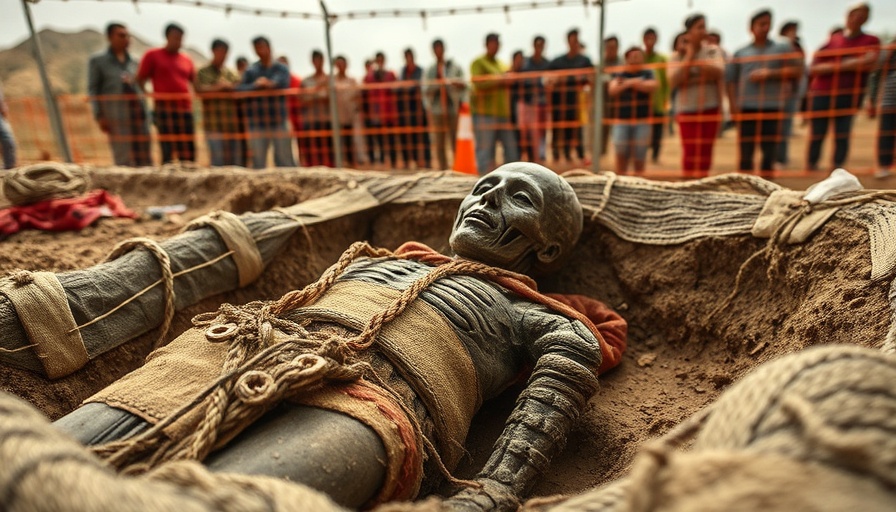
A Surprising Discovery Under Lima’s Soil
Imagine you’re just doing your job, digging trenches as a utility worker in Peru, when suddenly, you stumble upon a 1,000-year-old mummy with perfectly intact hair. This remarkable discovery happened in Lima, capturing not only the attention of the media but also the fascination of the scientific community. It's a reminder of how often our everyday lives brush against the edges of history.
The Fascination with Ancient Cultures
This mummy dates back to the pre-Incan era, specifically associated with the Wari culture, which flourished around 600-1000 AD. What makes this find truly remarkable is not merely its age but the preservation quality of the remains. With its intact hair and clothing still visible, this mummy provides a unique glimpse into the lives and customs of a society long vanished. Residents of Louisiana, like many across the globe, have a soft spot for history, especially when it is brought to life in such a vivid manner.
Understanding the Significance of the Find
This discovery sheds light on the burial practices of ancient Peruvians. Mummies like this one often reveal insights into the health, diet, and even the social structures of previous civilizations. For instance, the location of this find suggests that the area might have been a significant site for ancient peoples. While we enjoy our own rich culture here in Louisiana, the interconnectedness of our histories across different geographies adds to our collective narrative.
The Richness of Our Past: A Connective Tissue
Just as this mummy connects the past to the present, Louisiana is filled with stories waiting to be told. The Creole and Cajun cultures, with their distinct traditions, also remind us of the importance of heritage and history. Both this Peruvian mummy and our own local history highlight the value of preserving the stories that define us.
Future Insights: What This Find Could Mean
Experts predict that this discovery could lead to further excavations in the area, possibly unearthing more artifacts and remains that could deep dive into understanding the lives of ancient civilizations. The mummies often found across South America are not only vital for archaeology but also engage local communities in discussions about identity and heritage. It might prompt similar initiatives in Louisiana, where people come together to celebrate and preserve their roots.
Lessons in Preservation: Why It Matters
Preserving history is not just about keeping a record; it’s about understanding where we come from. This mummy’s intact hair serves as a metaphor for the stories and traditions we hold dear. It’s essential for the younger generations to learn these narratives, not just through textbooks but through community engagement, fostering an appreciation for their past. As we think about our state’s rich history, it invites us to explore how we can honor it as Louisianans.
Potential Discussions and Community Engagement
Local museums and historical societies can take this opportunity to draw parallels between Louisiana's history and this exciting Peruvian discovery. Hosting discussions and events that focus on ancient cultures, perhaps even organized trips to Peru, could enhance community interactions, further bridging cultures and histories.
Take Action: Explore Your Own Heritage
This astonishing find encourages us all to look closer at our own roots. Whether you’ve lived in Louisiana your entire life or just moved here, dive into local history. Participate in community events, visit historical sites, and learn about the various cultures that have influenced our beloved state. By nurturing our individual and collective histories, we can ensure they continue to be preserved and honored for generations to come.
In conclusion, discoveries like the 1,000-year-old mummy remind us of the rich tapestry of human experience stretching across centuries. By embracing our heritage with the enthusiasm seen in the global community following this find, we can foster an environment where history thrives. Join us in this exploration journey, as understanding our past can illuminate our present and inspire our future.
 Add Row
Add Row  Add
Add 



Write A Comment